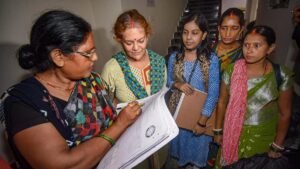GS-1: Indian Society

Key Points:
- Experts highlight that compiling a definitive list of castes and communities will be the primary hurdle for caste enumeration in the upcoming Census.
- India lacks a current, comprehensive caste database beyond constitutional SC, ST, and OBC lists.
- The 1931 Census, the last to fully enumerate castes, recorded over 4,147 distinct groups.
- The 2011 SECC failed to produce reliable caste data due to exaggerated responses and classification issues.
In-Depth Analysis: Existing Data Overview:
- The Anthropological Survey of India’s People of India project (1992-1999) identified 4,635 communities, including numerous sub-castes.
- Over 3,651 OBCs, 1,170 SCs, and 850 STs exist, but many are duplicated across states or listed under varying names.
Challenges in Enumeration:
- No standardized caste list exists for enumerators.
- The Registrar General of India must create a consolidated list through public consultations.
- In the 2011 SECC, respondents provided over 46 lakh caste names based on surnames or social identity, rendering the data unusable.
Linguistic and Regional Complexities:
- Enumerators must navigate regional naming variations and linguistic differences within communities.
- Communities may self-identify inconsistently, complicating classification.
Classification Challenges:
- Post-enumeration, grouping castes into categories is difficult.
- The 1931 Census struggled to classify groups, often listing them under overlapping categories like caste, tribe, or race.
Scientific/Technical Terms:
- Census Enumeration: A systematic process to collect socio-demographic data.
- SECC: A 2011 initiative to gather caste and economic data, though its caste findings were not officially released.
Significance:
- Accurate caste enumeration could enable data-driven affirmative action, social justice initiatives, and targeted welfare programs.
- Without methodological rigor, the process risks becoming politicized or statistically flawed.




